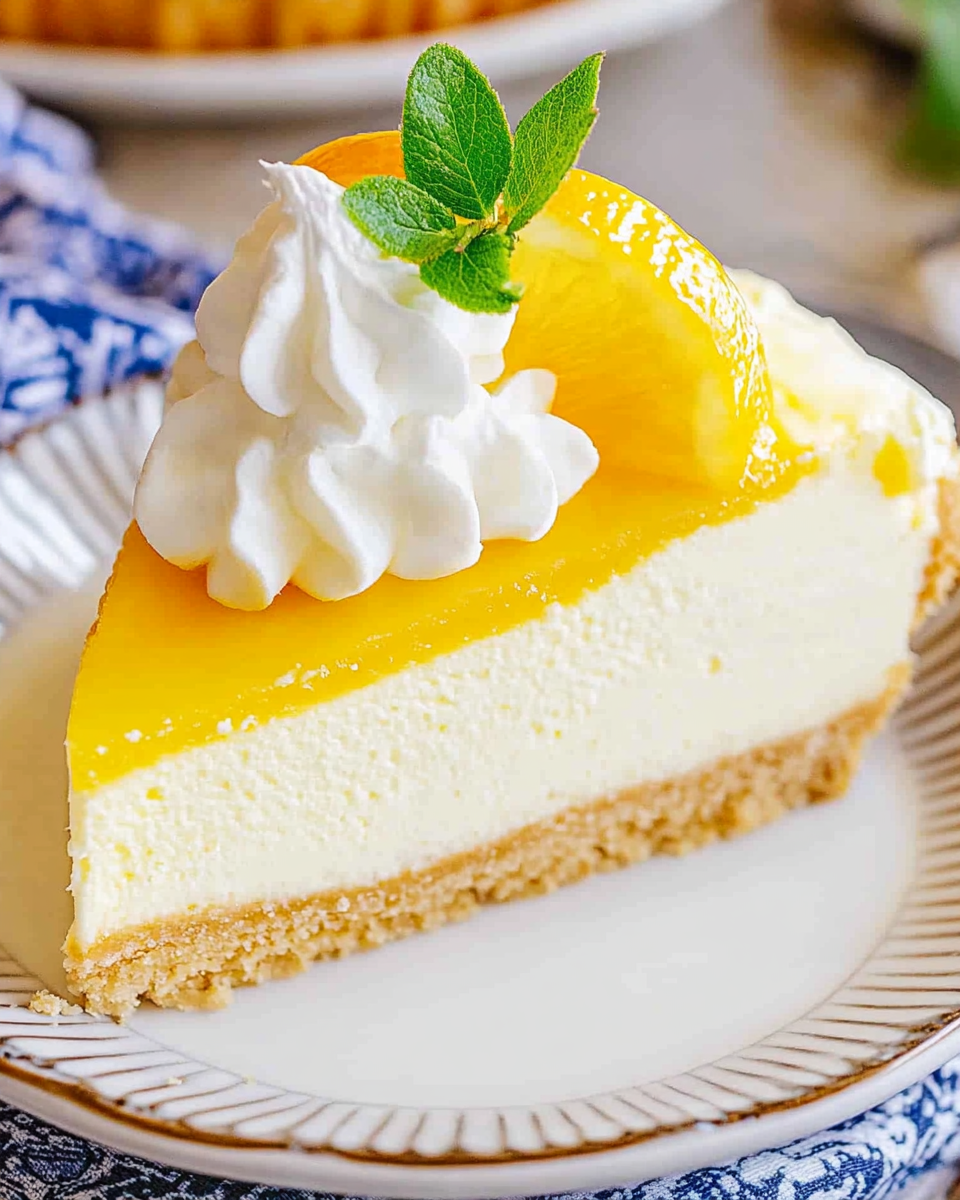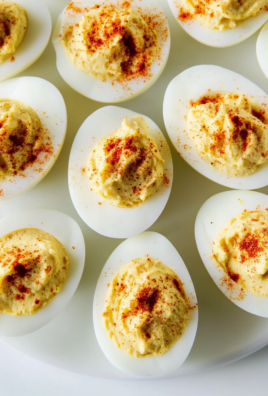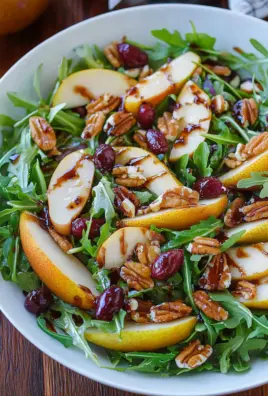This lemon cheesecake is the ultimate dessert for anyone who loves rich, creamy textures paired with bright, citrusy flavors. The tangy kick from fresh lemon juice and zest blends seamlessly into the silky cheesecake base, all supported by a buttery graham cracker crust. Finished with a glossy layer of lemon curd, this dessert delivers a perfect contrast of sweet and tart in every bite.

Whether you’re preparing it for a spring celebration, Easter dessert table, or a holiday dinner, this cheesecake is a guaranteed crowd-pleaser. It’s also surprisingly straightforward to make, with simple ingredients and easy-to-follow steps that result in a bakery-quality dessert. If you’re looking for a show-stopping centerpiece that feels light yet indulgent, this lemon cheesecake fits the bill.
Preparation Phase and Tools to Use
Making cheesecake at home can seem intimidating, but with the right preparation and tools, it’s entirely doable. Timing is important—this recipe involves baking, cooling, and chilling. Here’s what to expect:
- Prep time: 15 minutes
- Bake time: 1 hour 30 minutes
- Cool time in oven: 1 hour
- Chill time: 8 hours or overnight
Start by gathering everything you need and ensuring your cream cheese is at room temperature for a smoother filling.
Essential Tools and Equipment
To create the best possible texture and prevent common cheesecake issues like cracking or overbaking, these tools are essential:
- 9-inch springform pan
- Stand mixer or hand mixer
- Mixing bowls
- Rubber spatula
- Microplane or zester
- Heavy-duty aluminum foil
- Large roasting pan
- Measuring cups and spoons
Importance of Each Tool
Springform pan: Crucial for easy release of the cheesecake without damaging the crust or sides.
Water bath: Helps maintain an even oven temperature and prevents cracking.
Heavy-duty foil: Prevents water from leaking into the pan when baking in a water bath.
Zester: Ensures fine lemon zest that blends seamlessly into the batter, maximizing lemon flavor without bitter pith.
Preparation Tips for Success
To get a smooth, rich cheesecake without cracks or lumps, follow these tips:
- Bring all ingredients to room temperature before starting, especially the cream cheese and eggs.
- Beat the cream cheese thoroughly before adding sugar and eggs. This eliminates lumps.
- Add eggs one at a time to maintain a smooth batter and prevent overmixing.
- Scrape down the bowl often during mixing.
- Use a foil-wrapped pan in a water bath to avoid cracks and ensure even baking.
- Allow the cheesecake to cool slowly in the oven, then chill thoroughly in the fridge.
- Warm the lemon curd before spreading it over the cheesecake to avoid tearing the surface.
Ingredients
For the Crust
- 2 cups graham cracker crumbs
- ¼ cup granulated sugar
- ½ cup unsalted butter, melted
For the Cheesecake
- 32 oz cream cheese, softened (4 x 8-ounce packages)
- 1 cup granulated sugar
- 4 large eggs
- 2 teaspoons vanilla extract
- 4 tablespoons fresh lemon juice
- 1 tablespoon lemon zest
For the Topping
- 10 oz lemon curd (store-bought or homemade)
- Whipped cream (optional, for serving)
Step-by-Step Directions
- Preheat oven to 325°F (163°C).
- In a bowl, mix graham cracker crumbs, sugar, and melted butter until combined.
- Press crust mixture into the bottom and slightly up the sides of a 9-inch springform pan. Chill in the fridge while making the filling.
- In a stand mixer with the paddle attachment, beat cream cheese until completely smooth.
- Gradually add sugar while continuing to beat. Scrape down the sides of the bowl.
- Add eggs one at a time, mixing well after each addition.
- Stir in vanilla extract, lemon juice, and lemon zest. Mix until just combined.
- Wrap the outside of the springform pan with heavy-duty foil.
- Pour batter into the crust and smooth the top.
- Place the pan in a large roasting pan. Fill the roasting pan with hot water halfway up the sides of the cheesecake pan.
- Lower oven temperature to 300°F (149°C) and bake for 1 hour 30 minutes.
- Turn off oven. Leave cheesecake inside for 1 hour to finish setting.
- Remove from oven and water bath. Cool completely at room temperature.
- Cover and refrigerate for at least 8 hours or overnight.
- Once chilled, warm lemon curd and spread over the cheesecake.
- Garnish with whipped cream if desired.
This lemon cheesecake is now ready to impress. Follow this method closely, and you’ll have a smooth, tangy, and elegant dessert every time.
Serving Suggestions
This lemon cheesecake is a versatile dessert that works beautifully for a variety of occasions. Its smooth, tangy flavor and vibrant topping make it ideal for warm-weather celebrations or as a refreshing finish to heavier meals.
Here are some popular ways to serve it:
- Chilled with whipped cream: The cool, creamy texture pairs perfectly with a light dollop of whipped cream.
- With fresh berries: Add a handful of blueberries, raspberries, or sliced strawberries for extra color and a fresh fruit contrast.
- As a plated dessert: Drizzle with a raspberry coulis or a dusting of powdered sugar for an elegant restaurant-style presentation.
- For brunch: Slice into smaller portions and serve alongside fresh fruit platters and coffee.
- With a citrus twist: Add thin lemon slices or candied lemon peel for visual appeal and extra lemon flavor.
Each slice offers a rich, satisfying taste, so this dessert doesn’t require much embellishment. The lemon curd topping does most of the heavy lifting in terms of flavor and visual impact.
Common Mistakes to Avoid and How to Perfect the Recipe
Making cheesecake from scratch can be intimidating, especially when aiming for a perfectly smooth surface and balanced flavor. Below are common issues and how to avoid them:
Overmixing the Batter
Too much mixing, especially after adding the eggs, introduces excess air into the batter. This leads to puffing during baking and then collapsing or cracking as it cools.
Solution: Mix just until the ingredients are combined. Stop as soon as the batter is smooth.
Using Cold Ingredients
Cold cream cheese doesn’t blend easily, leading to a lumpy batter.
Solution: Allow all ingredients—especially cream cheese, eggs, and lemon juice—to come to room temperature before mixing.
Skipping the Water Bath
The water bath, or bain-marie, ensures even baking and helps prevent cracks by creating a moist environment in the oven.
Solution: Don’t skip this step. If you don’t have a large roasting pan, place a pan of hot water on the oven rack below the cheesecake.
Not Wrapping the Pan Properly
Without heavy-duty foil, water may leak into the crust and make it soggy.
Solution: Use two to three layers of heavy-duty aluminum foil and wrap tightly around the base and sides of the springform pan.
Overbaking the Cheesecake
A cheesecake is done when the outer edges are set and the center is still slightly jiggly. Overbaking causes a dry texture and potential cracking.
Solution: Follow the exact baking time and use the visual cues provided. Do not wait for the entire surface to firm up during baking.
Rushing the Cooling Process
Sudden temperature changes can cause the cheesecake to crack.
Solution: Let it sit in the turned-off oven with the door slightly open for one hour before cooling at room temperature, then chill in the fridge.
Side Dish Recommendations
While lemon cheesecake is typically the main dessert course, it can be paired with small accompaniments or side dishes to round out a full menu or create a dessert buffet. Here are eight complementary options:
- Fresh Berry Salad
A mix of strawberries, blueberries, blackberries, and mint adds a fresh note that contrasts beautifully with the richness of the cheesecake. - Macerated Berries in Citrus Syrup
Toss berries with a bit of sugar and lemon juice. Serve chilled alongside each slice. - Lemon Sorbet
A tart sorbet served between courses or as a side can enhance the citrus notes of the cheesecake. - Shortbread Cookies
The buttery crunch of a lemon or vanilla shortbread cookie adds texture and works well on a dessert platter. - Iced Green Tea or Mint Tea
These light beverages help cleanse the palate and balance the richness of the dessert. - Roasted Almonds or Candied Pecans
Serve in small bowls for added crunch and a contrast in flavor and texture. - Vanilla Bean Ice Cream
A small scoop of high-quality vanilla ice cream adds creaminess without overpowering the cheesecake. - Chocolate Dipped Strawberries
These offer a romantic and elegant pairing, especially for special occasions or plated desserts.
Each side option can be customized to suit the event. Whether you’re planning a casual brunch or a formal dinner party, these additions will elevate the presentation and experience of your lemon cheesecake.
Expert Recipe Tips
- Use a hot knife for clean slices: Before slicing, run a sharp knife under hot water, wipe it dry, and slice. Repeat between cuts for smooth, professional-looking pieces.
- Avoid opening the oven during baking: Sudden changes in temperature can cause the cheesecake to sink or crack. Use the oven light to check progress if needed.
- Choose fresh lemons: Bottled juice lacks the brightness and aromatic oils found in fresh lemon juice and zest.
- Strain the batter if necessary: If you spot any lumps, pour the batter through a fine mesh sieve before baking for an ultra-smooth texture.
How to Store Lemon Cheesecake
Proper storage will maintain the flavor and structure of your lemon cheesecake for up to one week.
- Refrigerator: Store the cheesecake covered tightly with plastic wrap or in an airtight cake container. It will stay fresh for 5 to 7 days in the refrigerator.
- Freezer: Wrap individual slices or the whole cheesecake (without whipped cream) tightly in plastic wrap and aluminum foil. Place in a freezer-safe container or bag. Freeze for up to 2 months.
To serve after freezing, allow it to thaw in the refrigerator overnight. Do not thaw at room temperature, as this can cause condensation or textural changes.
Reheating Instructions
Since cheesecake is served chilled, reheating is rarely necessary. However, if you prefer it slightly warm:
- Microwave method: Warm a single slice for 10 to 12 seconds in the microwave. Be careful not to overheat, or the texture may change.
- Oven method: Preheat the oven to 275°F. Place the cheesecake in the oven for about 10 minutes, then cool slightly before serving.
Avoid reheating the lemon curd topping, as it may become runny or separate.
Frequently Asked Questions (FAQs)
What causes cracks in cheesecake?
Cracks often result from overbaking, mixing too much air into the batter, or rapid temperature changes. Using a water bath, not overmixing, and allowing gradual cooling can prevent cracks.
Can I make lemon cheesecake ahead of time?
Yes. This dessert is perfect for making ahead. In fact, it needs at least 8 hours to chill and set. For best results, make it one day before serving.
Can I use bottled lemon juice?
While bottled juice will work in a pinch, fresh lemon juice and zest offer the best flavor and aroma. The citrus oils in the zest add depth that bottled juice cannot replicate.
How do I know when the cheesecake is done?
The edges should be set, but the center will still be slightly jiggly. It will continue to firm up as it cools in the oven and refrigerator.
What can I use instead of graham cracker crumbs?
You can use crushed digestive biscuits, vanilla wafers, or shortbread cookies. All provide a firm, buttery base.
Is it necessary to use a springform pan?
Yes. A springform pan allows easy removal of the cheesecake without damaging its sides or crust. If unavailable, use a deep cake pan lined with parchment paper, but note that removal may be more difficult.
Can I skip the water bath?
The water bath helps prevent cracking and promotes even baking. If you skip it, place a separate pan of hot water on the rack below the cheesecake to create a humid environment.
Can I use store-bought lemon curd?
Absolutely. Store-bought lemon curd is convenient and works well. If you prefer a homemade version, ensure it is fully cooled before spreading on the cheesecake.
Conclusion
This lemon cheesecake recipe offers the perfect balance of rich creaminess and bright citrus flavor. The buttery graham cracker crust, silky filling, and glossy lemon curd topping come together in a dessert that’s as elegant as it is satisfying.
With the right preparation, tools, and attention to detail, you can create a cheesecake that not only looks professional but tastes unforgettable. Whether you’re celebrating a special event or simply craving something sweet and tangy, this lemon cheesecake will become a go-to favorite.
If you’re ready to take on your next baking project, explore more dessert recipes on our Dessert Recipes Collection or learn how to make homemade lemon curd from scratch.
Lemon Cheesecake
Ingredients
For the crust:
- 2 cups graham cracker crumbs
- 1/4 cup granulated sugar
- 1/2 cup unsalted butter melted
For the cheesecake:
- 32 ounces cream cheese softened (4 x 8-ounce packages)
- 1 cup granulated sugar
- 4 large eggs
- 2 teaspoons vanilla extract
- 4 tablespoons fresh lemon juice
- 1 tablespoon lemon zest
For the topping:
- 10 ounces lemon curd store-bought or homemade
- Whipped cream for serving
Instructions
- Preheat the oven to 325°F (163°C).
- In a medium bowl, combine graham cracker crumbs, sugar, and melted butter. Mix until fully combined.
- Press the crust mixture into the bottom and slightly up the sides of a 9-inch springform pan. Refrigerate while preparing the filling.
- In a stand mixer fitted with a paddle attachment, beat the cream cheese until smooth and lump-free.
- Slowly add the sugar, mixing well and scraping down the sides of the bowl.
- Add the eggs one at a time, mixing thoroughly after each addition.
- Stir in vanilla extract, lemon juice, and lemon zest. Scrape down the bowl and mix briefly until combined.
- Wrap the outside of the springform pan with heavy-duty foil to prevent leaks.
- Pour the batter into the prepared crust and smooth the top.
- Place the pan into a large roasting pan. Fill the roasting pan with hot water halfway up the sides of the springform pan.
- Lower the oven temperature to 300°F (149°C) and bake for 1 hour and 30 minutes.
- Turn off the oven and leave the cheesecake inside for another hour to gradually finish setting. The center should be slightly jiggly.
- Remove the cheesecake from the oven and water bath, then allow it to cool completely at room temperature.
- Cover and refrigerate for at least 8 hours or overnight.
- Once chilled, remove the springform ring. Warm the lemon curd in 20-second intervals in the microwave until spreadable, then spread it over the top of the cheesecake.
- Garnish with whipped cream before serving.




Leave a Comment